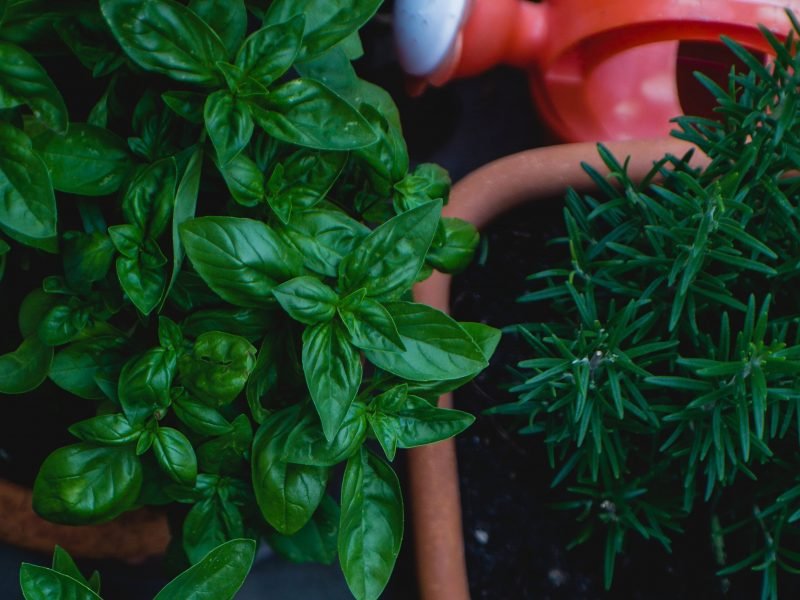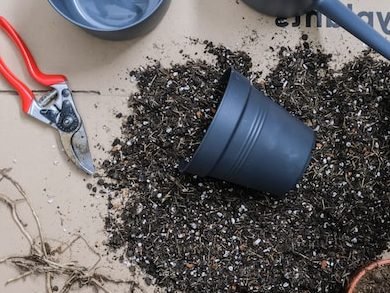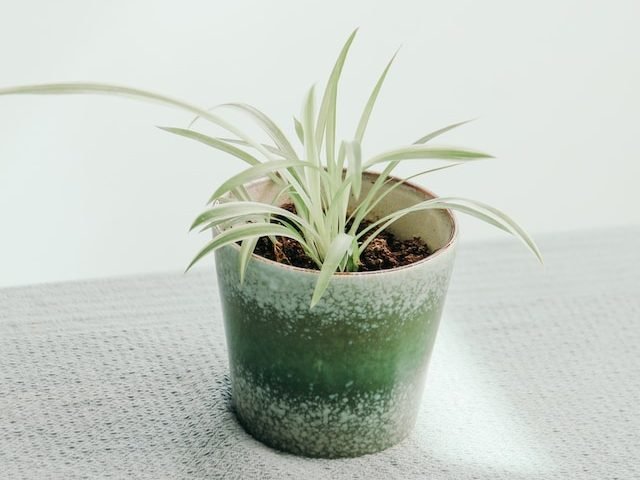
If you’re an ardent houseplant enthusiast looking to add a touch more green to your indoor space or a culinary enthusiast yearning to have fresh herbs at your fingertips, then you are in for a treat. This guide is all about digging into the delightful realm of growing herbs, right in the comfort of your home.
Why Indoor Herb Gardening is Becoming Popular Among Houseplant Enthusiasts
Indoor herb gardening is swiftly becoming a beloved hobby among houseplant enthusiasts. But why, you ask? The reasons are as varied as the plant species you can cultivate.
Practicality is one key factor. With a little sunshine and water, you can grow a bevvy of herbs, right in the comfort of your own home. Think of the convenience of plucking fresh rosemary or basil for your next culinary masterpiece!
Health benefits galore, too! Many herbs possess medicinal qualities – peppermint for digestion, chamomile for relaxation, and so on.
The satisfaction of nurturing something from seed to full bloom, of course, is unmatched. When keeping normal houseplants you rarely get the opportunity to see the full growth journey.
And let’s not forget about the positive environmental impact. By growing your own herbs, you reduce the need for store-bought ones, cutting down on plastic packaging waste.
With such an array of benefits, it’s no wonder indoor herb gardening is blossoming in popularity among houseplant enthusiasts.
The Best Herb Varieties to Grow Indoors: A Comprehensive Guide
Growing your own herbs is not just a serene and gratifying hobby; it’s also your ticket to a constant, fresh supply of aromatics. However, you might be wondering: which herbs should you choose to kickstart your indoor garden adventure?
Basil, the quintessential herb in every kitchen, is an excellent option to kickstart your indoor garden. It thrives in warm temperatures and loves a lot of sunlight, making it perfect for your sunny window sill. It’s also the perfect herb for beginners as it’s very easy to sprout from seed and grows quickly!
Next on our list is Parsley. This biennial plant does well in pots, tolerating low light levels and cooler temperatures. Its pretty, green tufts are not only a visual treat but it also adds a subtle, fresh flavour to your dishes.
For a pop of colour, add some Chives to your indoor herb collection. This onion relative is a wonderful indoor resident that’s easy to grow. Its dainty, purple flowers can brighten up any room.
Mint is another superb choice. This hardy herb is almost impossible to kill, making it perfect for beginners. Just remember, mint can be a bit of an overachiever and has a tendency to take over, so it’s best kept in its own pot.
If you’re after something a little more exotic, Coriander is a must-have. It’s a bit of a diva that doesn’t like too much heat or too little light, but once you find its happy place, it rewards you with a unique flavour that elevates any dish.
Now that you’re familiar with some indoor-friendly herb species, it’s time to get your fingers a little dirty. In the next section, we’ll dive into how to start your indoor gardening journey.
But first, let’s take a look at the level of difficulty for growing each species. This will give you a better idea of where you might want to start, especially if you’re new to the world of indoor gardening.
| Herb Species | Difficulty Level |
|---|---|
| Basil | Easy |
| Parsley | Intermediate |
| Chives | Easy |
| Mint | Easy |
| Rosemary | Advanced |
| Oregano | Intermediate |
| Thyme | Intermediate |
| Sage | Advanced |
| Coriander | Intermediate |
| Dill | Easy |
Remember, these are just guidelines. Every gardener’s experience can differ depending on factors like available light, temperature, and personal attention. So, don’t be disheartened if your first herb plant doesn’t flourish. Just try again!

How to Choose the Perfect Indoor Herb Garden Location in Your Home
Discovering the best spot for your indoor herb garden is a bit like finding the perfect pair of shoes. It requires a keen eye for detail and a touch of trial and error. But don’t worry, a few golden rules will have you unveiling your green thumb in no time.
The Light Factor
First and foremost, let’s talk about light. All herbs need a good dose of it, especially Mediterranean ones like rosemary and thyme. In general, a south or southwest-facing window is your best bet.
Temperature and Humidity
Next comes temperature and humidity. Herbs prefer cooler nights and warmer days, mimicking their natural outdoor environment. A spot that offers a temperature around 18-24°C during the day and a slightly lower one at night is ideal.
Room to Grow
Lastly, remember that your herbs need love and attention. Water them regularly, but not too much! Overwatering can quickly lead to rotten roots.
What Equipment You Need to Start Your Indoor Herb Garden
Just as a painter needs a palette, an indoor herb gardener needs the right equipment to bring their green dreams to life. Here, we’ll guide you through the essentials you’ll need to kickstart your indoor gardening journey.
1. Containers
When it comes to containers, your herbs aren’t picky – they just need something with drainage holes. You can opt for classic terra cotta pots or get creative with mason jars, old tea tins, or even a wooden crate.
2. Potting mix
Herbs prefer a potting mix that’s light and drains well. Look for a mix that’s specifically made for indoor plants, as these are generally lighter and contain the right nutrients for your herbs.
3. Grow lights
Unless your home is blessed with ample natural light, you’ll likely need grow lights. These special bulbs can replicate sunlight, helping your herbs thrive even in the darkest corners.
4. Watering can
A good old-fashioned watering can is a must. Choose one with a long spout to make watering easier, especially if your plants are in high or hard-to-reach spots.
5. Fertiliser
While not always necessary, a quality fertiliser can give your herbs an extra boost. Choose a slow-release type, preferably organic, to feed your herbs over time.
6. Pruning shears
Lastly, don’t forget your pruning shears. Regular pruning encourages your herbs to grow bushier and healthier – plus, it gives you a fresh harvest of delicious herbs to use in your kitchen!
Remember, the joy of indoor herb gardening lies not only in the end result, but also in the process. So gather your equipment, roll up your sleeves, and let’s get planting!
Starting Your Indoor Herb Garden: Tips and Tricks for Beginners
Starting an indoor herb garden can be an exciting endeavour, especially if you’re a newbie. It all starts with just a few simple steps. So, let’s get those green fingers working!
Choosing the Right Herbs
As a beginner, it’s best to start with herbs that are easy to grow indoors. Mint, Basil, Parsley, and Chives are all excellent choices. They’re not only culinary favourites but also quite forgiving to minor gardening mishaps.
Acquiring the Necessary Equipment
Taking care of indoor herbs doesn’t require a massive amount of equipment. In fact, you probably have most of it already! A few pots with drainage holes, some good-quality potting soil, and a spot with plenty of sunlight are all you really need.
Planting Your Herbs
When it comes to planting, start by filling your pots with soil. Then, make a small hole and place your herb cutting or seedling into it. Cover the roots with soil, press down slightly to secure it, and give it a good watering.
Watering and Feeding Your Herbs
Indoor herbs generally prefer a slightly damp soil. So, it’s best to water them regularly but sparingly. To help your herbs grow strong and healthy, you could also consider giving them a weak feed of liquid plant food every couple of weeks.
Harvesting Your Herbs
When your herbs are flourishing, it’s time to reap the fruits of your labour. Simply trim off what you need as and when you need it. Just remember, never harvest more than a third of the plant at a time to ensure it continues to thrive.
There you have it! With these tips and tricks, you’re well on your way to starting your own indoor herb garden. Happy planting!

Harvesting Your Indoor Herbs: When and How to Do It
If you’ve been nurturing your green thumb with indoor herb gardening, there comes a thrilling moment when your little plant babies are ready for the big world – the kitchen! Yes, we’re talking about harvesting. Knowing when and how to harvest your indoor herbs is a critical part of ensuring that your plants stay healthy and productive.
Timing Is Everything
Deciding when to collect your indoor herbs can be somewhat of a guessing game, but don’t worry, there are some tell-tale signs to look out for. A general rule of thumb is to harvest just before the plant blooms, as this is when the leaves are most flavourful. Monitor your herbs closely and look for buds as they’re about to open, that’s your cue!
How to Harvest
Harvesting indoor herbs requires a delicate touch, a bit like a plant surgeon if you will. The key is to snip off pieces here and there, without harming the overall plant. Here’s a quick step-by-step guide:
Firstly, use a pair of sharp, clean scissors to make precise cuts. Target the new growth areas – the tips of the stems where you can see new leaves forming. By cutting here, you’re encouraging the plant to grow bushier.
Next, make sure you only ever cut around a third of the plant’s overall foliage. This ensures the plant still has enough leaves for photosynthesis, which is essential for its growth. Lastly, remember, regular harvesting is beneficial for your herb plants, promoting new growth and keeping them healthy. Happy snipping!
How to Use Your Freshly Grown Herbs in the Kitchen: Recipes and Ideas
Herbs from your own garden can transform an ordinary dish into a culinary masterpiece! Not only do they carry an unbeatably fresh aroma and flavour, but their nutritional benefits are at their peak when freshly picked. Here are some inspiring uses of your homegrown herbs in the kitchen.
1. Basil Pesto
With a bushel of basil, you’re mere steps away from a delightful basil pesto. All you require is Parmesan cheese, pine nuts, garlic, olive oil, and of course, your fresh basil. Blend these together and presto, you have pesto! It’s perfect for pasta or as a marinade for chicken.
2. Rosemary Infused Olive Oil
Why buy flavoured oil when you can make your own? Simply heat some olive oil and add a couple of sprigs of rosemary. Let it cool, strain, and bottle. This aromatic oil is a delightful addition to salads, roasted vegetables, and meat dishes.
3. Minty Fresh Lemonade
Nothing says summer like a glass of homemade lemonade, spruced up with a fresh sprig of mint. The refreshing taste of mint beautifully complements the tangy lemon, making this the ultimate thirst quencher.
4. Herb Butter
Cooking becomes a joy when you have ingredients like herb butter. Simply combine your favourite herbs (like parsley, thyme, or dill) with some butter, and voila! The perfect companion for your morning toast, grilled steak, or baked potato.
And it doesn’t stop there! Herbs can make their way into a myriad of dishes, from soups to desserts. So let your culinary creativity run wild and make the most of your indoor herb garden.
Troubleshooting Common Indoor Herb Garden Problems: Pests and Diseases
For all the joy that indoor herb gardening brings, it’s not without its fair share of challenges. One of the main culprits of this green-thumbed headache? Unwanted pests and diseases. But fear not, dear reader, because we’re here to help you troubleshoot these common problems.
Pests
Indoor herbs may sometimes play host to tiny, uninvited guests. Pests such as spider mites, aphids, and whiteflies can wreak havoc on your lush herb garden if left unchecked. But before you panic, let’s arm you with some knowledge and practical solutions.
- Spider Mites: These little critters love dry conditions. Keep your plant’s environment humid, and regularly mist the leaves. For a severe infestation, try a natural insecticidal soap.
- Aphids: These pests can be washed off with a gentle spray of water. For persistent issues, consider introducing beneficial insects, like ladybugs, into your indoor garden.
- Whiteflies: Yellow sticky traps work wonders here. If the problem persists, a solution of water and dish soap sprayed on your plants can help.
Diseases
Plants, like humans, can fall ill too. Fungal diseases, root rot, and powdery mildew are common culprits that can affect your indoor herb garden. Fear not, we’ve got a remedy for each of these ailments.
- Fungal Diseases: These typically thrive in damp conditions. Ensure good air circulation, avoid overwatering, and consider using a natural antifungal treatment if necessary.
- Root Rot: Overwatering is the main cause here. If the roots look brown and feel mushy, cut back on watering, and consider repotting the plant in fresh, well-draining soil.
- Powdery Mildew: This often appears as a white powdery substance on leaves. Increase air circulation, reduce humidity, and treat with a homemade spray of water and baking soda.
In the grand scheme of growing your indoor herb garden, these problems are just minor bumps on the road. With a dash of knowledge, a sprinkle of patience, and a hearty helping of love, your indoor herbs can thrive, despite the challenges they might face.
Taking Your Indoor Herb Garden to the Next Level: Creative Display and Design Ideas
Let’s face it, budding indoor gardeners, not only do you want your herbs to thrive, but you also want them to add a dash of beauty to your home decor. The right display and design can transform your green friends from simply being houseplants to becoming vibrant pieces of indoor art. Here are some innovative ideas that will enhance both the aesthetics and the functionality of your indoor herb garden.
1. Vertical Gardens
When floor space is at a premium, think upward! Vertical gardens provide a unique, space-saving way to cultivate your herbs. They also make a stunning visual impact, transforming a bare wall into a lush green canvas.
2. Mason Jar Herb Garden
Mason jars don’t just look great, they’re practical too. With a bit of gravel for drainage, some potting soil and seeds, you’ve got yourself an adorable mini herb garden. Arrange them on a windowsill for maximum sun exposure and watch your herbs flourish.
3. Hanging Herb Garden
Hanging herb gardens offer another fantastic solution for those short on space. Plus, they add a bit of bohemian flair to your home. You can use anything from tiered wire baskets to macramé hanging planters for a chic, free-spirited vibe.
4. Herb Garden as a Room Divider
Why not make your herb garden work a little harder and use it as a room divider? A tall, narrow shelf filled with herbs can create a beautiful, aromatic barrier that’s far more charming than your standard partition.
5. Pallet Herb Garden
For an earthy, rustic look, consider transforming a wooden pallet into a lovely herb garden. Just be sure to seal it first to protect the wood and keep it looking great.
Remember, the key to a fantastic indoor herb garden is not just about growing healthy plants, but also about displaying them in a way that complements your home and personal style. So why not get creative with your green thumbs and start designing?
Indoor herb gardening is both enjoyable and advantageous, allowing the cultivation of fresh herbs throughout the year. With suitable herbs, equipment, and care, anyone can partake in this hobby.
Starting with herbs like basil, mint, and parsley can be encouraging for beginners. Essential equipment includes a good potting mix, suitable pots, and a grow light. Consistency and patience are key to a successful indoor garden.













